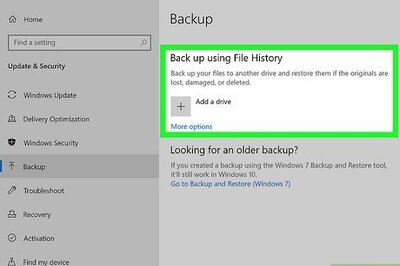
views
WASHINGTON: U.S. consumer prices rose 0.4% in August as used car prices surged by the largest amount in 51 years.
The Labor Department reported Friday that the August increase in the consumer price index reflected some moderation following big gains of 0.6% in both June and July as the pace of energy price gains slowed.
However, there were still areas which showed bigger price increases, led by a 5.4% jump in used car prices, the biggest monthly gain since March 1969. New car prices were unchanged in August but analysts predicted prices there likely to rise in coming months, reflecting supply shortages. Motor vehicle production closed completely during the spring as the pandemic shut down wide swaths of the economy.
Other big gains were seen in household furnishings which jumped 0.9%, the largest monthly increase since February 1991, with the prices of furniture, bedding and appliances all showing big gains.
Still, even with the recent gains, inflation increases over the past year are modest. Overall inflation is up 1.3% while core inflation, which excludes energy and food, is up 1.7%.
Consumer inflation has been accelerating as economic activity has resumed and these readings bear watching for further acceleration even though the trend remains subdued against a backdrop of weak demand and excess capacity, said Rubeela Farooqi, chief U.S. economist at High Frequency Economics.
The slowdown in overall inflation in August after bigger gains in June and July reflected moderation in energy costs, which were up 0.9% last month following gains of 5.1% in June and 2.5% in July. The cost of gasoline was up 2% in August but is 16.7% lower than a year ago.
Food costs edged up a modest 0.1% in August after having fallen 0.4% in July. The price of beef fell 4.4% after an 8.2% July drop reflecting easing price pressures as supply disruptions at packing plants due to the coronavirus eased.
Inflation remains below the Federal Reserve’s 2% target, and last month Fed officials changed their operating policy to say that it was prepared to allow inflation to run above 2% for a time to make up for the many years that the central bank has failed to reach the 2% target.
Because of that change, many officials believe the Fed will leave its benchmark interest rate, which influences many consumer and business loans, at a record low near zero at its meeting next week and for the foreseeable future as it tries to boost the country out of a recession which has cost millions of jobs.
Disclaimer: This post has been auto-published from an agency feed without any modifications to the text and has not been reviewed by an editor



















Comments
0 comment